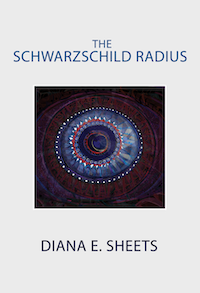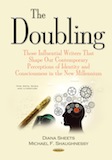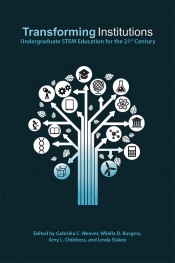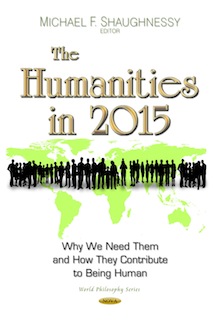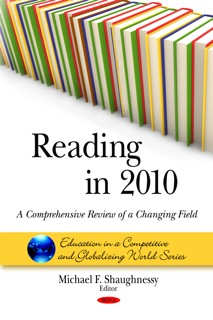The Humanities in Crisis: What Went Wrong and How to Restore Their Centrality in our Daily Lives, Part 1
Part 1 of “The Humanities in Crisis: What Went Wrong and How to Restore Their Centrality in our Daily Lives”. It will be serialized in three parts. It examines the factors underlying the decline of the humanities in liberal arts colleges and universities today.
This essay is available in a collection edited by Michael F. Shaughnessy entitled The Humanities in 2015: Why We Need Them and How They Contribute to Being Human. It was published in 2014 by Nova Science Publishers. A “read only” version of the essay, provided it is intended for noncommercial purposes, may be accessed from my Literary Gulag website by clicking on the book cover image of The Humanities in 2015, http://www.literarygulag.com/, as well as from my Literary Gulag website featured at the University of Illinois IDEALS Open-Access website, https://www.ideals.illinois.edu/handle/2142/54916. All copyright permissions must be obtained from the publisher.
Diana Sheets
English and History Departments, iFoundry Fellow
University of Illinois
DEDICATED TO STEPHEN E. LEVINSON
WHOSE LOVE OF SCIENCE SHAPED HIS APPRECIATION OF THE HUMANITIES
Abstract
Over the past 50 years student enrollments in the liberal arts at colleges and universities has plummeted. Our current crisis in the humanities received considerable attention in 2013 with the publication of several influential reports including—“Mapping the Future”, “The Heart of the Matter”, and “What Does Bowdoin Teach?”—as well as one major conference—“A New Deal for the Humanities”—devoted to the importance of public institutions of higher education in sustaining the liberal arts. However, except for the Bowdoin report, no attempt has been made to address the root cause of the malaise, which is the eradication of academic excellence founded in the Western canon by the imposition of “social justice”.
This paper defines the humanities. It examines the subject from a historical perspective. It demonstrates how the curriculum, presently saturated in politics and almost devoid of academic content, lies at the root of the problem. Revitalization of the humanities means understanding our history and the innovations that nurture greatness. The liberal arts must work in partnership with the social sciences, business, and the engineering and mathematical sciences to provide students with an education grounded in academic excellence and founded upon an appreciation of Western civilization.
The Problem Identified by Comparisons Between the Humanities and the Sciences
The “crisis” of the humanities in the United States was headline news for much of 2013. In late April of that year, Harvard held a conference “The Humanities and the Future of the University” focused on what might be done to revive student interest in majoring in the humanities (Ireland, 2013, http://news.harvard.edu/gazette/story/2013/05/oh-the-humanities/). The conference was followed in June by the publication of a lengthy report “The Teaching of the Arts and Humanities at Harvard College: Mapping the Future”. The study was the outcome of an intensive 18-month investigation by more than 40 faculty in the arts and humanities at Harvard who sought to find ways to reinvigorate flagging student interest in the liberal arts while strengthening its curriculum (“Mapping the Future”, 2013, http://tinyurl.com/k2ll7be; “Addressing a Decline in Humanities Enrollment”, 2013, http://harvardmagazine.com/2013/06/reinvigorating-the-humanities). The report is an attempt to consider what might be done to reengage undergraduates in the humanities, which historically have been the cultural foundation of Harvard’s elite education.
What is the gist of the study? The argument is essentially that enrollments in the humanities have declined over the course of the past 50 years, and, therefore, major efforts are needed to reinvigorate these disciplines to ensure their continued relevance and, more to the point, bolster their enrollments.
The numbers tell the narrative. Undergraduate degrees received in the humanities from four-year colleges and universities throughout the country dropped by half from 14% in 1966 to 7% in 2010. In the case of Harvard, 36% of students majored in the humanities in 1954 as compared with only 20% in 2012. Even more disturbing, because of its importance as an indicator, is that over the past 10 years the numbers of students expressing a desire to major in the humanities at Harvard has declined by one-third (Levitz & Belkin, 2013, http://tinyurl.com/pslmzpu).
The decrease in the numbers of students majoring in the humanities is particularly significant for Harvard and most elite colleges in America—as opposed to engineering and technical colleges—because these schools have historically defined their educational credentials, if not their excellence, by and through their faculty in the humanities and the associated course offerings. Consider, for example, Stanford University. Approximately 45% of the faculty teaching undergraduates there are concentrated in the humanities. Nevertheless, only 15% of Stanford students major in liberal arts. Indeed, not a single humanities department at Stanford ranks in the top five in terms of undergraduate enrollments (Lewin, 2013, http://www.nytimes.com/2013/10/31/education/as-interest-fades-in-the-humanities-colleges-worry.html?_r=0).
Nor is the Stanford case really any exception. As Andrew Delbanco, a professor in the English Department at Columbia University, noted, “Both inside the humanities and outside, people feel that the intellectual firepower in the universities is in the sciences, that the important issues that people of all sorts care about, like inequality and climate change, are being addressed not in the English departments” (Lewin, 2013). Or as English professor Louis Menand at Harvard put it, “How many people do you know who’ve read a book by an English professor in the past year? But everybody’s reading science books” (Lewin, 2013).
This concern bleeds through “Mapping the Future”. But what are the solutions proposed? They call for generalization over specialization; they advocate critical thinking; they emphasize interdisciplinary studies; they stress the importance of the present in shaping and influencing interpretations of the archives, and they reject the Western canon of “Great Books” in favor of teaching any and all works “we think are great” (“In Brief: Mapping the Future”, 2013, http://tinyurl.com/od668d3).
Less than two weeks after Harvard released “Mapping the Future”, the American Academy of Arts and Sciences issued its own report “The Heart of the Matter: The Humanities and Social Sciences for a Vibrant, Competitive, and Secure Nation” prepared by the Commission on the Humanities and Social Sciences. The study makes the case that “the humanities and social sciences are the heart of the matter, the keeper of the republic—a source of national memory and civic vigor, cultural understanding and communication, individual fulfillment and the ideals we hold in common” (“The Heart of the Matter”, 2013, p. 9, http://www.humanitiescommission.org/_pdf/hss_report.pdf). “The humanities”, the report continues, “remind us where we have been and help us envision where we are going” (“The Heart of the Matter”, 2013, p. 9).
In response to a bipartisan request from both houses of Congress regarding how our nation will “maintain national excellence in humanities and social scientific scholarship and education” (“The Heart of the Matter”, 2013, p. 6), the Commission on the Humanities and Social Sciences was formed. Its report, “The Heart of the Matter”, identifies what it deems as the principal mandate, namely, educating Americans “in the knowledge, skills, and understanding they will need to thrive in a twenty-first-century democracy” while fostering “a society that is innovative, competitive, and strong...” (“The Heart of the Matter”, 2013, p. 6). To accomplish that, the report emphasizes the importance of ensuring that Americans are developing the capability for leadership and success “in an interconnected world”. “The Heart of the Matter” insists that “these goals cannot be achieved by science alone” and emphasizes “the connections between the humanities and social sciences, and the physical and biological sciences” (“The Heart of the Matter”, 2013, p. 6).
If Harvard’s “Mapping the Future” appears disconnected from the real-world challenges, “The Heart of the Matter” is not. It understands that humanistic education cannot and by implication must not be detached from the social sciences and that by inference both must find a way to interact meaningfully with the scientific community if these disciplines are to have relevance and if we are to prosper as a people and a nation.
“The Heart of the Matter” sets forth a multi-pronged program to implement recommended changes not only for the K-12 education but also for a spectrum of educational institutions focused on higher learning. Of course, the devil is in the details. One of the challenges with mandates culled from committee reports that are assembled for governmental and political purposes is that individuals have differing opinions as to what exactly are the challenges and how to best overcome them. Thus, in commenting on “The Heart of the Matter”, The New York Times Op-Ed columnist David Brooks was careful to distance himself from the recommended proposals, even though he acknowledged that he was a contributing member (Brooks, 2013, http://www.nytimes.com/2013/06/21/opinion/brooks-the-humanist-vocation.html).
While more upbeat and pragmatic in its assessment and prescriptions for remedies than Harvard’s study, nevertheless, “The Heart of the Matter” might be regarded as an addendum to the influential 2007 STEM (Science, Technology, Engineering, Mathematics) educational and policy report “Rising Above the Gathering Storm: Energizing and Employing America for a Brighter Economic Future”. The premise driving this STEM study is simple: “Without high-quality, knowledge-intensive jobs and the innovative enterprises that lead to discovery and new technology, our economy will suffer and our people will face a lower standard of living” (“Rising Above the Gathering Storm”, 2007, p. 1, http://www.nap.edu/openbook.php?record_id=11463&page=R1).
“Rising Above the Gathering Storm” was undertaken by the Committee on Prospering in the Global Economy of the 21st Century: An Agenda for American Science and Technology. It was initiated on behalf of the National Academy of Sciences, the National Academy of Engineering, and the Institute of Medicine. The report was at the behest of bipartisan members of both houses of Congress (“Rising Above the Gathering Storm”, 2007, ix-xii).
Four actions are recommended to ensure continued prosperity for the twenty-first century. First, the report calls for improvements in STEM education throughout K-12 by enhancing the number, quality, and training of science teachers with the goal of “10,000 Teachers, 10 Million Minds” (“Rising Above the Gathering Storm”, 2007, pp. 4-7, 112-135). Second, it advocates a renewed emphasis on research, thereby “Sowing the Seeds” for our continued innovation and economic success (pp. 4, 7-8 136-161). Third, it encourages initiatives in higher education in the United States that ensure America continues to be “the most attractive setting in which to study and perform research” (p. 9) for scientists and engineers in order to attract and retain the “Best and Brightest” (pp. 4, 9-10, 162-181). Fourth, it nurtures economic policy that creates “Incentives for Innovation” (pp. 4, 11-12, 182-203).
Failure to implement these measures would, as the Committee noted, have dire consequences: “We can expect to lose our privileged position. For the first time in generations, the nation’s children could face poorer prospects than their parents and grandparents did” (“Rising Above the Gathering Storm”, 2007, p. 13). Indeed, in the aftermath of 9/11 and the 2008 economic meltdown, this warning is proving to be harsh reality, rather than dire prophesy.
The implications of the title “Rising Above the Gathering Storm” should be clear. It is borrowed from Winston Churchill’s The Gathering Storm—the first of six volumes he wrote about the historical role of Britain during the Second World War. If, as Raymond Callahan suggests, Churchill can be credited with having led his nation to “its last, terribly costly, imperial victory” (Callahan, 2006 reviewing “In Command of History: Churchill Fighting and Writing the Second World War” in The Journal of Military History, Vol. 70, No. 2, 551-552), a similar concern weighs in the balance of “Rising Above the Gathering Storm”: Will America have the scientific and technological edge to ensure her continued success in the twenty-first century? The report suggests that unless we aggressively focus on bolstering our STEM disciplines, our fate will resemble the diminished position of Britain after World War II: its colonial empire waning, its global reach circumscribed, and its economic and military might enfeebled.
From this perspective, “The Heart of the Matter” or even “Mapping the Future” might be seen as a footnote to the larger enterprise of ensuring America’s continued economic, scientific, engineering, and bio-medical dominance for the twenty-first century.
The American Academy of Arts and Sciences and Harvard College were not alone in expressing concerns about the fate of the humanities. In September of 2013, the University of Illinois sponsored a conference: “A New Deal for the Humanities: Liberal Arts and the Future of Public Higher Education”. Its focus was on the historic and cultural importance of public land-grant universities and their academic contribution to the humanities (Hutner & Mohamed, 2013, http://www.newrepublic.com/article/114616/public-universities-hurt-humanities-crisis).
The conference and its participants made an impassioned plea for ensuring the continued goal of providing opportunities for aspirational students interested in studying the humanities at land-grant universities. Nevertheless, no one at the conference attempted to address how these beleaguered departments associated with the humanities at public colleges and universities will be economically supported as state and local funding for these institutions decline.
Indeed, national educational allocations at the state and local level in 2011 were only 40.2% of the 1980 expenditure. This lead Thomas G. Mortenson, in an article written for the American Council on Education, to extrapolate based on current trends that “the national average state investment in higher education will reach zero in fiscal 2059” (Mortenson, 2012, http://www.acenet.edu/the-presidency/columns-and-features/Pages/state-funding-a-race-to-the-bottom.aspx).
The harsh economic reality facing students today has prompted Peter Cohan, writing for Forbes Magazine, to recommend entirely eliminating the humanities from colleges and universities. More than half of all graduates under the age of 25 in 2011, he points out, were either without jobs or searching for better opportunities and a disproportionate number of them majored in the humanities. Meanwhile, student loan debts currently exceed one trillion dollars (Cohan, 2012, http://www.forbes.com/sites/petercohan/2012/05/29/to-boost-post-college-prospects-cut-humanities-departments/).
Indeed, “Mapping the Future” acknowledged the growing numbers of students “voting with their feet” to pursue degrees in disciplines outside the humanities presumably with the hope of better job prospects (“Mapping the Future”, 2013, pp. 7-9, 30, 43). Nevertheless, no one attending “A New Deal for the Humanities” Conference directly addressed this phenomenon. Nor did the conference acknowledge the elephant in the room, namely, that since the 1980s the humanities curriculum at colleges and universities has been all but stripped of academic content because of the imposition of identity politics derived from the assumed mandate for “social justice”. These developments, for all intents and purposes, have banished meaningful intellectual engagement on campuses (A. Bloom, The Closing of the American Mind, Simon & Schuster, 1987; A. B. Kernan What’s Happened to the Humanities? Princeton University Press, 1997; H. Mansfield, “The Higher Education Scandal” published in the Claremont Review of Books in Spring 2013 and now available at Real Clear Politics, http://tinyurl.com/ljsxl6y).
We’ll address this last issue in greater detail later when we examine the curriculum at Bowdoin College based on Peter Wood and Michael Toscano’s report “What Does Bowdoin Teach?: How a Contemporary Liberal Arts College Shapes Students” (Wood & Toscano, 2013, http://www.nas.org/images/documents/What_Does_Bowdoin_Teach.pdf).
But for now readers should understand that by the late 1990s, the “culture wars” had essentially eradicated academic excellence from the humanities and with it 500 years of Western civilization. In its place was a “progressive” political agenda founded on righteous grievances pertaining to class, race, and gender that dominated academic values, which in turn influenced the teachers hired, the courses taught, and the ideas conveyed in the classroom (Sheets, 2010).
The outcome was an unending focus on identity politics conjoined with social justice to ensure not only remedial economic opportunity for the disadvantaged but also a commitment to multicultural diversity at the expense of academic excellence. Not surprisingly, the outcome produced a cultural bias against the Western canon, which was perceived as a hegemonic expression of the White Anglo-Saxon Protestant (WASP) male elite that perpetuated social inequities against women and aggrieved minorities. The politicization of college and university campuses ultimately ensured that students no longer struggled to think critically and dispassionately about intellectual ideas since identity politics and social justice trumped academic impartiality (Sheets, 2010, https://www.ideals.illinois.edu/handle/2142/54915; Sheets, 2012, https://www.ideals.illinois.edu/handle/2142/54911).
Having enumerated some of the issues surrounding the so-called “crisis of the humanities” that was played out publically in the summer and fall of 2013, let’s step back. Let’s begin at what should rightfully be called the beginning. First, let’s define the humanities. Second, let’s look at how the humanities are historically “read” and interpreted today. Third, let’s examine how the curriculum at Bowdoin College reveals the weaknesses inherent in undergraduate studies in the liberal arts and how this contributes to our students’ failure to think critically, as well as to succeed in our competitive global marketplace today. Fourth, let’s recommend changes in undergraduate liberal arts education in the hope that we can provide students with a humanistic education while enabling them to develop the skills necessary to succeed. Then, and only then, we can begin to “reengineer” the processes back down to K-12 and even pre-school to ensure that our students possess the educational background in both the STEM and the humanistic disciplines.
Developing a Definition of the Humanities That Encompasses the Social Sciences
What should serve as our definition of the humanities? Let’s borrow from the Humanities Council of Washington D.C., which is concerned with developing a functional working definition of the humanities that relates to how ordinary Americans, rather than academics, encounter the humanities in their lives.
The Humanitiesare the disciplines that help us understand and define cultures, and human experience, including history, anthropology, literature, art history, ethics, philosophy and jurisprudence. (“Defining the Humanities—A Work in Progress”, 2001/2009, p. 2, http://www.wdchumanities.org/docs/defininghumanities.pdf)
The Humanities Council then elaborates, borrowing a definition from the Georgia Humanities Council.
The humanities are stories passed from generation to generation to transmit culture. These stories are also known as our history, literature, laws, ethics, religion, philosophy, anthropology etc. (“Defining the Humanities”, 2001/9, p. 5)
Perhaps the simplest way of describing our experience with the humanities, suggests the Humanities Council of Washington D.C., is that they “are the human face of culture” (“Defining the Humanities”, 2001/9, p. 5). The Illinois Humanities Council takes this perspective a step further to suggest that the humanities serve as the binding glue of civilization without which we would have trouble understanding ourselves, as well as our connection to our communities and our world, both with respect to time and place.
The disciplines of the humanities help us make connections. They connect small questions to large questions, our neighborhoods to the world, and our time to other times and places. (“Defining the Humanities”, 2001/9, p. 6)
For the purposes of addressing the current crisis, let’s stipulate that our working definition of the humanities be designated as “the disciplines that help us understand and define cultures, and human experience...” (“Defining the Humanities”, 2001/9, p. 2). Let’s interpret this broadly to include both the humanities (that would encompass but not be limited to literature, languages, linguistics, philology, philosophy, rhetoric, the visual, as well as the performing arts, in addition to history, anthropology, cultural studies, and law) and the social sciences (that would include but not be limited to sociology, psychology, economics, and political science while the disciplines of history, anthropology, and cultural studies sometimes straddle the humanities and the social sciences) since the latter is concerned with “the study of human society and of individual relationships in and to society” (The Free Dictionary.com by Farlex, n.d., http://www.thefreedictionary.com/social+science) without becoming too closely associated with the rigorous and theoretical mathematics that generally define the STEM disciplines.
Thus, our working definition encompasses the perspective of the American Academy of Arts and Sciences, which in its study “The Heart of the Matter” grouped the humanities and social sciences together in contrast to the STEM disciplines.


